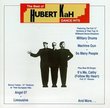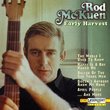| All Artists: Giovanni Gabrieli, William Brade, Johann Chistoph Pezel, Orlande de Lassus, Antony Holborne Title: The Antiphonal Music of Gabrieli [SACD] Members Wishing: 2 Total Copies: 0 Label: Sony Release Date: 3/28/2000 Album Type: Enhanced, Super Audio CD - DSD Genres: Dance & Electronic, Classical Styles: Opera & Classical Vocal, Chamber Music, Historical Periods, Baroque (c.1600-1750), Symphonies Number of Discs: 1 SwapaCD Credits: 1 UPC: 696998917361 |
Search - Giovanni Gabrieli, William Brade, Johann Chistoph Pezel :: The Antiphonal Music of Gabrieli [SACD]
![The Antiphonal Music of Gabrieli [SACD]](https://nationalbookswap.com/cd//l/72/6772/6086772.jpg) | Giovanni Gabrieli, William Brade, Johann Chistoph Pezel The Antiphonal Music of Gabrieli [SACD] Genres: Dance & Electronic, Classical |
Larger Image |
CD DetailsSimilar CDs
Similarly Requested CDs |
CD ReviewsA great find Guy Cutting | 06/15/2000 (5 out of 5 stars) "First, a word of explanation about the contents of this recording is in order. Tracks 1-13 consist exclusively of Gabrieli's music (canzons and sonatas) played by the Chicago, Cleveland, and Philadelphia Brass Ensembles (some of the pieces only call for two "choirs" of instruments, so the groups alternate in the performances). Tracks 14-32 consist exclusively of Frescobaldi's music - some of it for organ only and some for brass and organ. This music is performed by E. Power Biggs on the organ and the Boston Brass Ensemble (recorded at Harvard University in the Busch-Reisinger museum). The music of the two composers was recorded at seperate times (Gabrieli in 1968 and Frescobaldi in 1959) and from what I gather initially released seperately, but then later combined in this re-release. Gabrieli's music consists of canzons and sonatas (his titles for them). A canzon is a very formal piece: it consists of exposition (each of the instruments enters with the theme in formal imitation and contrapuntal fun follows - it's fugue-ish, but I don't know if these sections actually qualify as fugues in technical terms) followed by development (subject fragments enter the conversation in various forms and are played back and forth between the choirs) and then finally a closing section which is a restatement of the beginning (recapitulation, it seems). The sonatas share similar form - unfortunately I'm not sure of the exact similarities and differences. I suspect that what Gabrieli calls a sonata would not fit the later Classical qualifications for being called a sonata, but certainly they share many characteristics. Frescobaldi's music consists of music for organ alone and for combined organ and brass. The organ music is toccatas and what are best called preludes; the remainder is more canzons. This music is really enjoyable to listen to, for many reasons. First, as the enthusiastic Stereo Review writer wrote upon the initial release of this recording, "Spectacular, spectacular, spectacular. And in case you didn't get the message, SPECTACULAR!". Just in sheer visceral terms, the music certainly is spectacular. The sound is magnificent. The the brass ensembles produce a grand sound which is heightened by the constant interplay between groups. The organ is powerful as well and the combination of organ and brass really is something to behold. Gabrieli is known for, among other things, tremendous cadences in which all parts combine very strongly and they show themselves here. On another level, the music is quite emotionally engaging. Despite being written for brass (well, apparently no specific instrumentation was originally indicated, but "obviously the music calls for the brilliant sonority of brasses", as Biggs tells us) it is not all ceremonial or festive- sounding music (to probably misuse those terms). Some it is very gentle, some of it playful, some of it dark, and of course some it it grand as you would expect. Anyway suffice it to say that the music is expressive beyond what you might think it to be (somehow Frescobaldi's is not quite as engaging to me as Gabrieli's - but I'm sure that's just an issue of taste). The final level of appeal is the music's complexity. Like I said, the music is not all pomp. It's very intricately constructed (maybe I'm the only person this appeals to but I'll keep talking anyway). There is a great deal of fascinating counterpoint which goes on and I like that very much. This music is definitely Renaissance in character, but it is also definitely forward looking and transitional.The playing is excellent (on both "sections" of the recording, the Gabrieli and the Frescobaldi). The Philadelphia, Chicago, and Cleveland groups have great unity and coherence. The musicians were carefully placed to maximize the antiphonal effect and they succeed brilliantly. Especially if you listen on good equipment, the sound is really dazzling. But to get back to the quality of the playing, these musicians are obviously all very skilled. The instruments all produce very clear and distinguishable tones, so that brass actually demonstrates itself to be quite an effective medium for counterpoint. Biggs is one of my favorite organists and he performs well here as usual. The Boston Brass Ensemble is very good as well (but there's less of a sense of "chemistry" between the players, if that makes any sense - the other three ensembles really play brilliantly together). Technically they're great but what all the above verbiage can't describe is the sense of excitement throughout the recording. There really is music being made here.The background behind the recording is revealing. Done in three sessions of three hours each, the pieces were rehearsed once or twice and then recorded in another one or two playings (all the more remarkable when you consider that, as Abe Torchinksy tells us in the liner notes, some of the musicians hadn't ever heard of the music before being brought together for this recording). That sense of spontaneity is present throughout (no conductor was present and interpretation was done according to whatever ideas anyone had - the process obviously worked). The sound is surprisingly good - the remastering was obviously quite successful. Recommended enthusiastically... man I spend too much time writing these things =)" Excellent Transfer of a Landmark Recording T. Gaiser | San Francisco, CA United States | 08/26/2002 (5 out of 5 stars) "After reading the above reviews I felt strongly compelled to add my two cents. Let's put this recording in its proper context: the Gabrieli portion of the release is perhaps the greatest symphonic brass recording ever made. There have been other outstanding brass recordings since the late 1960's, many making use of digital technology, but none can touch these performances for the sheer caliber of playing. The Gabrieli works capture the brass sections of three of the five class A orchestras at the peak of their game, at the end of the tyrant/conductor era when all five orchestras--especially the brass sections-sounded so remarkably different (sadly not so true today). I grew up with these recordings and wore out several LP copies--like so many others who aspired to be orchestral brass players. The SACD transfer is the best version of the recordings yet. Played side-by-side with the regular CD release, the SACD has markedly superior separation, placement and clarity. It also unfortunately shows all the cosmetic flaws of the original analog recording. Microphone distortion in high volume passages and reverberation at the end of some the works (Andrew Kazdin, what were you thinking?) is all the more glaring on the SACD disc. However, I can more than live with these detractions considering the transparency of the sound on the new release. Unless you're a brass player or serious fan, listening to this entire recording in one sitting may be a bit much (this is, after all, a brass recording). Instead I recommend listening to tracks 1, 3, 6, 7, 9, 11, and 13 to get the best idea of the disc. I have other SACD recordings that sound better, but none that I enjoy more than this one. If you're a fan of brass music, this release is an absolute must. Six stars." The original Super-band bnbayer | Toronto | 10/03/2003 (5 out of 5 stars) "I was a music student at university when this first came out (and no, I'm not a brass player). This recording created an absolute sensation. We all knew, or knew of, all these musicians - they were individual superstars of the classical world - and we had spent hours listening to them and debating their relative merits and that of their orchestras. Now here they were all together! It defied belief.I think I wore my first copy of the LP flat, I played it so much. 35 years later I can still hear it if I close my eyes.Few of us knew anything about Gabrieli, so our admiration for the incredible musicianship on display also brought us into the whole new world of Renaissance music. (Younger people probably couldn't believe this part, but the Early Music revolution was still some ways off. This was all new then.)All the above comments apply to the Gabrieli part of the recording. Until I bought it and opened it up I didn't realise that Sony was giving us the other [Glorious Sound of Brass] LP in the same package. I personally don't find that portion of the disc nearly as successful... it's good, but not a standout. Doesn't matter: the Gabrieli alone is worth the price of admission.Sound is excellent - better than the CD of course, but also even better than the LP - much more apparent sound stage and the subtle differences between the various players' sounds are more readily noticed.[One point of argument with the only low rating... it's a brass record. Says so right on the cover. Picture of all those cats with trumpets and such. Why are you surprised? Seems a bit perverse to criticise a brass record for having too much brass. Don't want an hour of brass? Buy something else. This isn't supposed to be an SACD demo disc - it's about the music, silly.]"
|





![Seussical [2000 Original Broadway Cast]](https://nationalbookswap.com/cd//m/02/4802/514802.jpg)